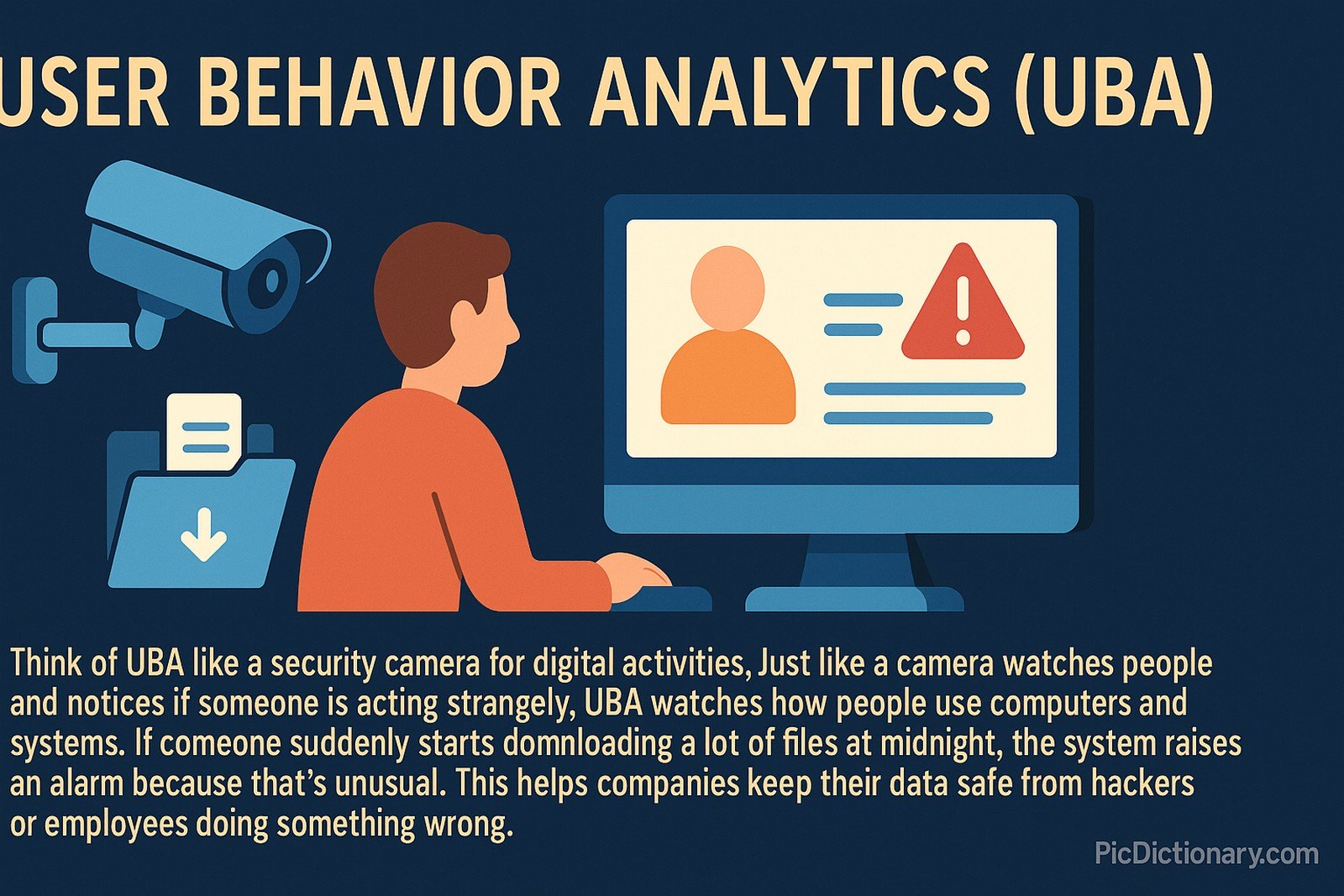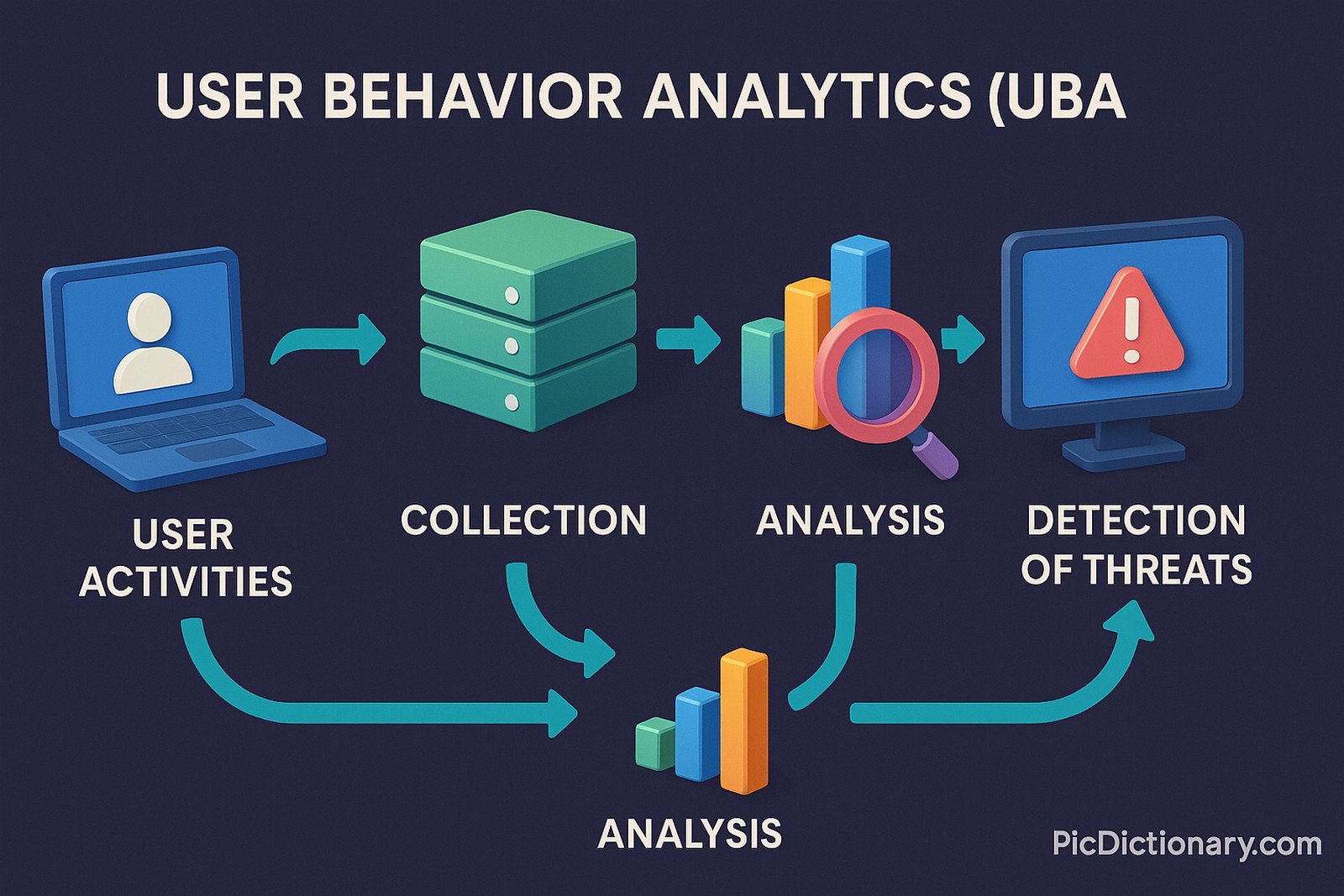User Behavior Analytics (UBA)
 (Representational Image | Source: Dall-E)
(Representational Image | Source: Dall-E)
Quick Navigation:
- User Behavior Analytics Definition
- User Behavior Analytics Explained Easy
- User Behavior Analytics Origin
- User Behavior Analytics Etymology
- User Behavior Analytics Usage Trends
- User Behavior Analytics Usage
- User Behavior Analytics Examples in Context
- User Behavior Analytics FAQ
- User Behavior Analytics Related Words
User Behavior Analytics Definition
User Behavior Analytics (UBA) refers to the process of tracking, collecting, and analyzing patterns in user activities across digital platforms. UBA is primarily used in cybersecurity to detect insider threats, fraud, and abnormal user behavior that could indicate a security risk. By leveraging machine learning and statistical models, UBA establishes baselines of normal user behavior and flags deviations that might indicate potential threats. Organizations use UBA to enhance their security.
User Behavior Analytics Explained Easy
Think of UBA like a security camera for digital activities. Just like a camera watches people and notices if someone is acting strangely, UBA watches how people use computers and systems. If someone suddenly starts downloading a lot of files at midnight, the system raises an alarm because that’s unusual. This helps companies keep their data safe from hackers or employees doing something wrong.
User Behavior Analytics Origin
UBA originated in the early 2010s as a response to the increasing sophistication of cyber threats. Traditional security systems relied on predefined rules to detect threats, but as attackers became more advanced, rule-based methods failed to catch complex attacks. UBA emerged as a solution, using behavioral analytics and AI to detect unusual activity without relying solely on predefined rules.
User Behavior Analytics Etymology
The term “User Behavior Analytics” combines “User,” referring to system users, “Behavior,” indicating their actions, and “Analytics,” which involves studying patterns and insights. The phrase highlights the core concept of monitoring and interpreting user actions to detect anomalies.
User Behavior Analytics Usage Trends
UBA has grown rapidly in cybersecurity, with industries such as finance, healthcare, and government adopting it for threat detection and compliance monitoring. As cybercriminals continue to develop new attack methods, UBA remains a key tool for preventing unauthorized access and data breaches. The rise of AI and machine learning has further enhanced UBA's capabilities, making it an essential component of modern security strategies.
User Behavior Analytics Usage
- Formal/Technical Tagging:
- Cybersecurity
- Insider Threat Detection
- Anomaly Detection - Typical Collocations:
- "UBA system for cybersecurity"
- "monitoring user behavior patterns"
- "UBA-based anomaly detection"
- "detecting insider threats with UBA"
User Behavior Analytics Examples in Context
- A financial institution uses UBA to detect fraudulent transactions by identifying unusual spending behavior.
- A company’s IT team implements UBA to identify employees who access sensitive data outside of normal business hours.
- Government agencies use UBA to monitor for potential cyber threats by detecting unusual login locations.
User Behavior Analytics FAQ
- What is User Behavior Analytics (UBA)?
UBA is a cybersecurity approach that analyzes user actions to detect potential security threats. - How does UBA work?
It collects user activity data, establishes a normal behavior baseline, and flags deviations. - Why is UBA important in cybersecurity?
It helps detect insider threats, fraud, and suspicious activities that traditional security tools may miss. - What technologies power UBA?
Machine learning, artificial intelligence, and statistical modeling are key technologies behind UBA. - How does UBA differ from traditional security tools?
Unlike rule-based security, UBA identifies unusual patterns without needing predefined attack signatures. - Is UBA only used for cybersecurity?
No, it’s also used for compliance monitoring and operational efficiency improvements. - What are the challenges of implementing UBA?
It requires large datasets, advanced analytics, and ongoing fine-tuning to avoid false positives. - Can UBA prevent data breaches?
While it can't prevent breaches entirely, it significantly enhances early threat detection. - How does UBA help with compliance?
It ensures adherence to security policies and regulatory requirements by tracking user activities. - Which industries benefit most from UBA?
Finance, healthcare, government, and large enterprises rely heavily on UBA for security.

User Behavior Analytics Related Words
- Categories/Topics:
- Cybersecurity
- Data Protection
- Threat Intelligence
Did you know?
In 2014, a major bank avoided a massive data breach using UBA when the system detected an employee accessing client records at unusual hours. By acting quickly, the bank prevented data theft and secured its network against further attacks.
PicDictionary.com is an online dictionary in pictures. If you have questions or suggestions, please reach out to us on WhatsApp or Twitter.Authors | Arjun Vishnu | @ArjunAndVishnu

I am Vishnu. I like AI, Linux, Single Board Computers, and Cloud Computing. I create the web & video content, and I also write for popular websites.
My younger brother, Arjun handles image & video editing. Together, we run a YouTube Channel that's focused on reviewing gadgets and explaining technology.



Comments powered by CComment